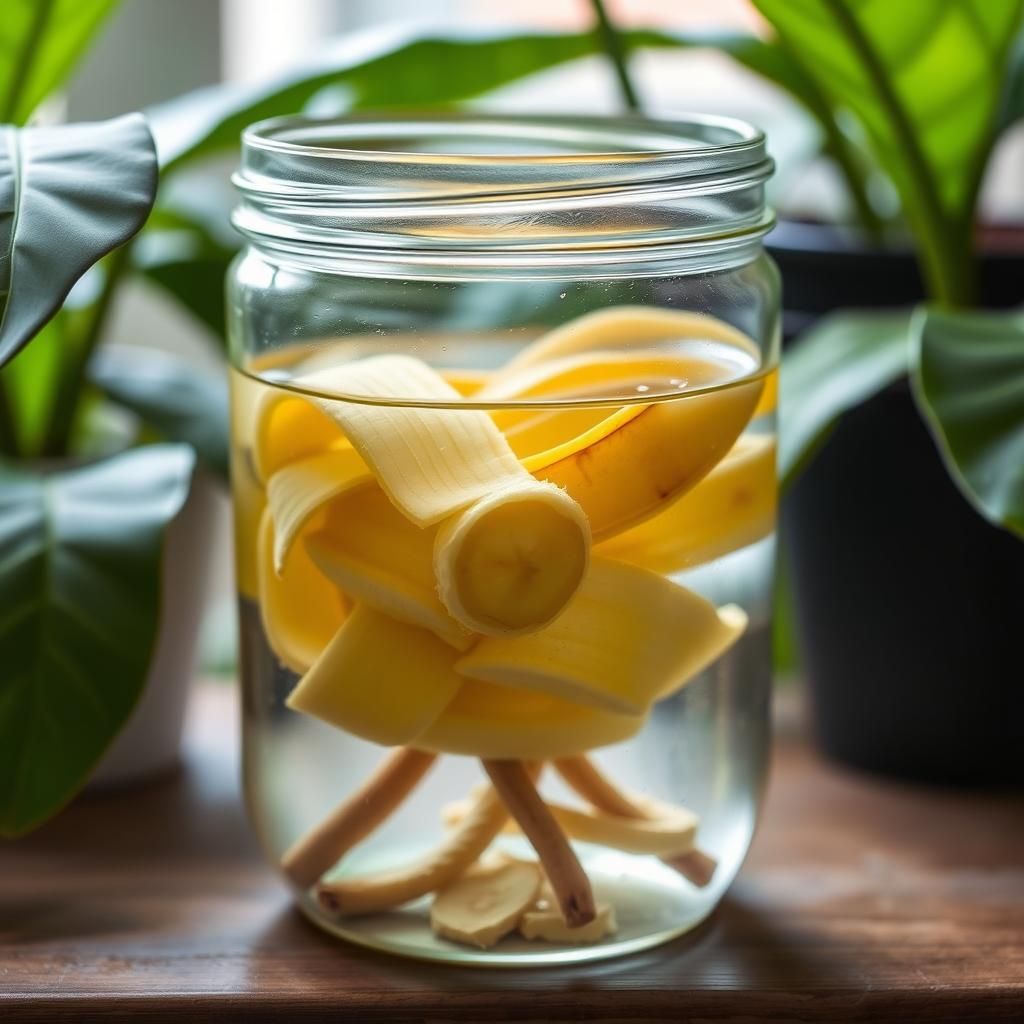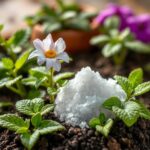How Long Do I Soak Banana Peels in Water for My Plants? A Complete Guide to Effective Plant Care

Banana peels are often overlooked as a valuable resource for plant care, but they can provide essential nutrients that promote healthy growth. Many plant enthusiasts wonder how long they should soak banana peels in water to maximize their benefits. This complete guide will delve into the best practices for soaking banana peels, the nutrients they offer, and how to effectively incorporate this natural fertilizer into your gardening routine. By understanding the optimal soaking time and method, you can enhance the health of your plants, reduce waste, and contribute to a more sustainable gardening approach.
How Long Should I Soak Banana Peels in Water for My Plants?
Soaking banana peels in water is a great way to create a nutrient-rich liquid fertilizer for your plants. The ideal soaking time is typically 24 to 48 hours. This duration allows the banana peels to release their beneficial nutrients, especially potassium, phosphorus, and calcium, into the water. After soaking, you can use the liquid to water your plants, giving them a boost of essential nutrients that promote healthy growth and flowering. It’s advisable to strain the liquid to remove any solid pieces before application to prevent mold growth in your garden soil.
Benefits of Using Banana Peels for Plants
Using banana peels as a fertilizer provides numerous benefits. They are rich in essential nutrients, especially potassium, which is crucial for plant health, aiding in the development of strong roots and improving flower and fruit production. Additionally, banana peels contribute calcium, which helps prevent blossom end rot in tomatoes and peppers. By soaking them, you ensure that these nutrients are easily accessible to your plants, enhancing overall soil quality and promoting vigorous growth.
Ideal Conditions for Soaking Banana Peels
When soaking banana peels, it's best to use room temperature water to facilitate the leaching of nutrients. You can place the peels in a container and fill it with water, ensuring they are fully submerged. Some gardeners prefer to add a few drops of liquid fertilizer to enhance the nutrient profile further. Covering the container with a lid helps retain microbes that are beneficial for plant health while preventing evaporation of the nutrients.
How to Use Banana Peel Water for Different Plants
Banana peel water can be used for a variety of plants, including vegetables, flowers, and houseplants. For indoor plants, dilute the banana peel water with equal parts of regular water to prevent over-fertilization. For outdoor vegetable gardens, directly applying the soak water around the base of the plants can provide a quick nutrient boost. It's essential to monitor your plants after application, adjusting the frequency based on their response, usually applying every 2-4 weeks.
Frequency of Application
The frequency of applying banana peel water largely depends on the specific needs of your plants and their growth stage. Typically, applying it every two weeks is sufficient, especially during the growing season. However, if your plants show signs of nutrient deficiency, such as yellowing leaves or poor fruit production, you may consider increasing the frequency to once a week until improvement is seen. Remember to alternate banana peel water with other fertilizers to provide a balanced nutrient intake.
Precautions When Using Banana Peels
While banana peels are generally safe for plants, there are some precautions to consider. Over-fertilization can occur if the banana peel water is applied too frequently or in too high a concentration. This may lead to salt buildup in the soil, which can harm plant roots. Additionally, keep an eye out for any signs of mold on the peels during soaking; if mold forms, discard the mixture and start fresh to avoid introducing any harmful pathogens to your plants.
| Nutrient | Benefit |
|---|---|
| Potassium | Promotes strong root development and fruit production. |
| Calcium | Helps prevent blossom end rot in tomatoes and peppers. |
| Phosphorus | Aids in energy transfer and photosynthesis in plants. |
Does banana peel water really help plants grow?


The belief that banana peel water can help plants grow has gained popularity among gardening enthusiasts. This concept is primarily based on the rich nutrient content found in banana peels. When banana peels are steeped in water, they release several beneficial compounds that can enhance plant growth.
Nutrient Composition of Banana Peels
Banana peels are known for their high nutritional value, which includes essential elements like potassium, phosphorus, calcium, and magnesium. When soaked in water, these nutrients are released, making them accessible for plants.
- Potassium - Vital for improving water uptake and overall plant health.
- Phosphorus - Supports root development and flowering.
- Calcium and Magnesium - Essential for cell wall structure and enzyme activation.
How to Prepare Banana Peel Water
To create banana peel water, follow a simple procedure. This method ensures that you effectively extract the nutrients from the peels.
- Collect several banana peels.
- Chop them into smaller pieces to increase surface area.
- Soak the chopped peels in water for 24 hours.
- Strain the mixture, and the resulting liquid is your banana peel water.
Benefits of Banana Peel Water for Plants
Using banana peel water presents several advantages for your plants. The application of this solution may contribute to overall plant vitality.
- Natural Fertilizer - Offers a chemical-free alternative to synthetic fertilizers.
- Improved Nutrient Absorption - Encourages better uptake of key nutrients in the soil.
- Enhanced Soil Microbial Activity - Promotes beneficial microbes, leading to healthier soil.
Plants That Benefit the Most
Certain plants can significantly benefit from the nutrients present in banana peel water. Identifying these plants can enhance your gardening efforts.
- Fruit-Bearing Plants - Tomatoes and peppers thrive with added potassium.
- Root Vegetables - Carrots and radishes may experience improved growth.
- Flowering Plants - Roses and orchids can benefit from increased phosphorus.
Potential Drawbacks of Using Banana Peel Water
While banana peel water has numerous benefits, there are also potential drawbacks to consider. Understanding these considerations ensures proper application.
- Possible Odors - Decomposing organic matter can produce unpleasant smells.
- Pest Attraction - Sugary residue may attract pests and insects.
- Nutrient Imbalance - Over-application can lead to an excess of certain nutrients.
Which plants like banana skins?

Banana skins, or banana peels, are rich in nutrients and can be beneficial for various plants. They contain important minerals like potassium, phosphorus, and calcium, which promote growth and strengthen plants. Here are some plants that particularly benefit from the addition of banana skins to their soil or compost:
See also:
1. Tomatoes
Tomatoes thrive when fed with banana skins due to the high potassium content, which helps in fruit development. Banana peels can enhance the overall growth and health of tomato plants, leading to a more robust yield.
- Promotes better fruiting and flowering.
- Improves plant disease resistance.
- Encourages stronger root development.
2. Roses
Roses benefit significantly from the use of banana skins, which can help enhance their health and vibrancy. The nutrients in banana peels aid in blooming and contribute to the overall beauty of the flowers.
- Enhances blooming and fragrance of flowers.
- Promotes green and luscious foliage.
- Helps in pest resistance.
3. Peppers
Both sweet and hot peppers can benefit from the addition of banana skins to their soil. The extra potassium helps improve fruit set and promotes healthier growth, leading to higher yields.
- Boosts fruit production and size.
- Enhances flavor and sweetness of peppers.
- Improves plant resilience against diseases.
4. Cucumbers
Cucumbers can take advantage of the nutrients found in banana peels, aiding in their overall growth and fruit production. The added nutrients help cucumbers grow faster and yield more fruit.
- Increases the rate of growth and development.
- Enhances the taste and texture of cucumbers.
- Strengthens plant structure and resistance.
5. Spinach and Leafy Greens
Leafy greens such as spinach thrive when banana peels are incorporated into the soil. The essential nutrients promote lush green leaves and robust growth, making them preferred options for gardeners.
- Improves leaf size and vigor.
- Enhances the nutrient profile of leafy greens.
- Contributes to a higher yield of greens.
Questions from Our Readers
How long do I soak banana peels in water for my plants?
To make a nutrient-rich solution, you should soak banana peels in water for 24 to 48 hours. This allows the essential nutrients, such as potassium and phosphorus, to leach out into the water, making it beneficial for your plants.
Can I use dried banana peels instead of soaking them?
While dried banana peels can still provide some nutrients to your plants, soaking fresh peels is more effective as it releases the nutrients more readily into the water. If you choose to use dried peels, consider grinding them to increase nutrient availability, but soaking fresh ones is recommended for the best results.
What are the benefits of using banana peel water for plants?
Using banana peel water offers numerous benefits, as it is rich in potassium, calcium, and phosphorus, which are crucial for plant growth. This nutrient boost can help enhance root development, promote flowering, and improve overall plant health, making it a valuable addition to your gardening routine.
See also:
Can I soak banana peels in any type of water?
Yes, you can soak banana peels in any type of clean water, including tap water or filtered water. However, using chlorine-free water is preferable, as chlorine can harm beneficial microorganisms in the soil and may impact your plants' nutrient uptake.

If you want to read more articles like How Long Do I Soak Banana Peels in Water for My Plants? A Complete Guide to Effective Plant Care, we recommend you check out our Plants category.
Leave a Reply
Related Articles